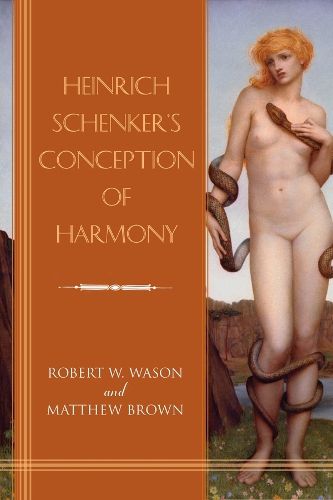Readings Newsletter
Become a Readings Member to make your shopping experience even easier.
Sign in or sign up for free!
You’re not far away from qualifying for FREE standard shipping within Australia
You’ve qualified for FREE standard shipping within Australia
The cart is loading…






The first detailed study of Schenker's pathbreaking 1906 treatise, showing how it reflected 2500 years of thinking about harmony and presented a vigorous reaction to Austro-Germanic music theory ca. 1900.
What makes the compositions of Handel, Bach, Haydn, Mozart, Beethoven, Schubert, Schumann, Chopin, and Brahms stand out as great works of art? Heinrich Schenker (1868-1935) set out to answer this question in a series of treatises, beginning with a strikingly original work with the deceptive title Harmonielehre (roughly: Treatise on Harmony, 1906).
Whereas other treatises of the period associated harmony with the abstract principles governing chords and chord progressions, Schenker's treated it as the conceptual glue that allowed the individual elements of a work (melodies, motives, chords, counterpoint, etc.) to work together locally and globally. Yet this book, though renowned and much cited, has never been studied systematically and in close detail.
Heinrich Schenker's Conception of Harmony approaches Schenker's 1906 treatise as a synthesis of ancient ideas and very new ones. It translates, for the first time, two preparatory essays for Harmonielehre and describes his later views of harmony and the ways in which they influenced and also were ignored by the 1954 edition and translation, entitled simply Harmony. Though problematic, Harmony was the first published translation of a major work by Schenker, inaugurating the study of his writings in postwar America and Britain, where they continue to be highly influential.
$9.00 standard shipping within Australia
FREE standard shipping within Australia for orders over $100.00
Express & International shipping calculated at checkout
The first detailed study of Schenker's pathbreaking 1906 treatise, showing how it reflected 2500 years of thinking about harmony and presented a vigorous reaction to Austro-Germanic music theory ca. 1900.
What makes the compositions of Handel, Bach, Haydn, Mozart, Beethoven, Schubert, Schumann, Chopin, and Brahms stand out as great works of art? Heinrich Schenker (1868-1935) set out to answer this question in a series of treatises, beginning with a strikingly original work with the deceptive title Harmonielehre (roughly: Treatise on Harmony, 1906).
Whereas other treatises of the period associated harmony with the abstract principles governing chords and chord progressions, Schenker's treated it as the conceptual glue that allowed the individual elements of a work (melodies, motives, chords, counterpoint, etc.) to work together locally and globally. Yet this book, though renowned and much cited, has never been studied systematically and in close detail.
Heinrich Schenker's Conception of Harmony approaches Schenker's 1906 treatise as a synthesis of ancient ideas and very new ones. It translates, for the first time, two preparatory essays for Harmonielehre and describes his later views of harmony and the ways in which they influenced and also were ignored by the 1954 edition and translation, entitled simply Harmony. Though problematic, Harmony was the first published translation of a major work by Schenker, inaugurating the study of his writings in postwar America and Britain, where they continue to be highly influential.